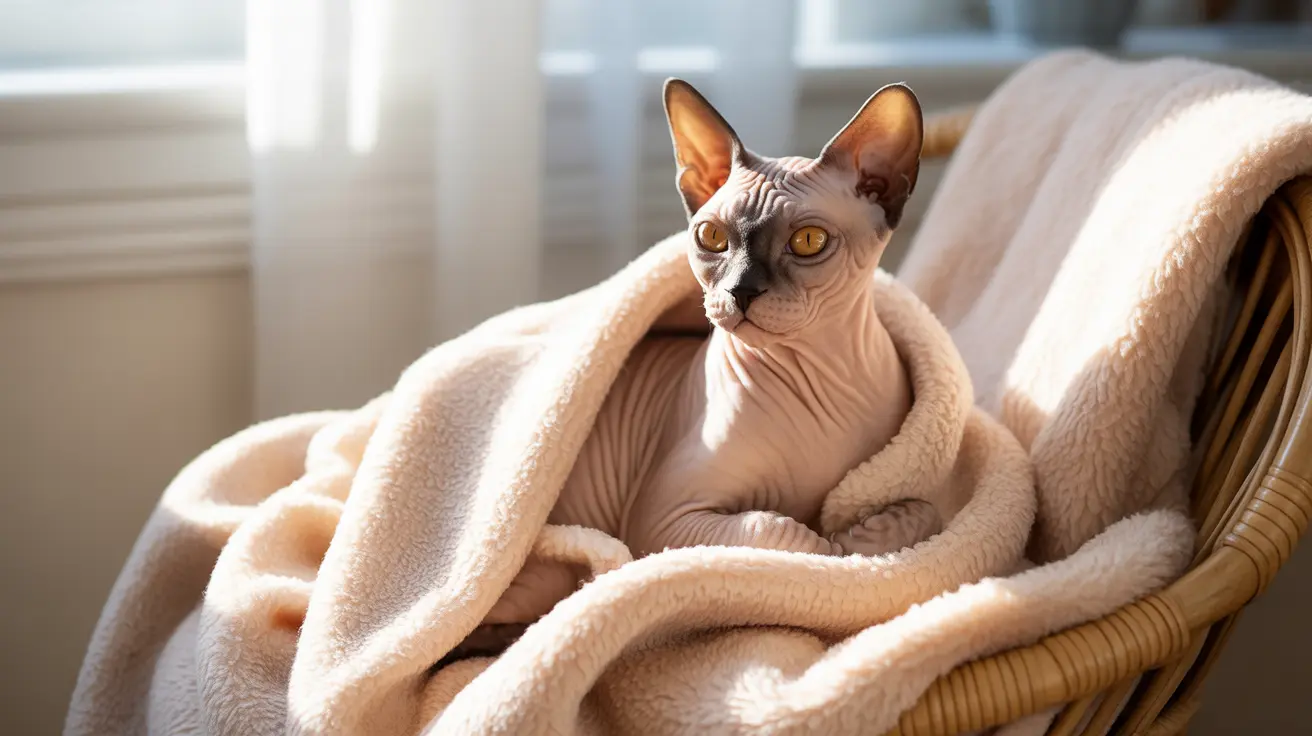Sphynx cats, with their distinctive hairless appearance, require special attention when it comes to temperature regulation. Unlike their furry counterparts, these unique felines lack the natural insulation that helps most cats maintain their body temperature, making them particularly susceptible to getting cold.
Understanding how to keep your Sphynx cat warm isn't just about comfort—it's essential for their health and well-being. In this comprehensive guide, we'll explore why these fascinating creatures get cold so easily and what you can do to ensure they stay cozy year-round.
Understanding Sphynx Cats' Temperature Sensitivity
Sphynx cats naturally run warmer than other cats, with body temperatures that can reach up to 103°F (39.4°C), compared to the typical feline range of 100.5-102.5°F (38-39.2°C). This higher temperature is their body's way of compensating for heat loss due to their lack of fur.
Without the insulating layer that fur provides, Sphynx cats lose body heat more rapidly through their exposed skin. This makes them particularly vulnerable to environmental temperature changes and drafts that other cats might barely notice.
Creating the Perfect Environment for Your Sphynx
The ideal indoor temperature for a Sphynx cat ranges between 68°F and 80°F (20-27°C). Maintaining consistent temperatures within this range helps prevent both chilling and overheating.
Consider these environmental modifications to keep your Sphynx comfortable:
- Install draft excluders under doors
- Keep windows properly sealed
- Position cat beds away from air vents
- Provide multiple warming stations throughout your home
Essential Warming Solutions
Specialized Bedding
Invest in self-heating beds and thermal blankets designed specifically for pets. These items use the cat's own body heat to create a warm, cozy environment without requiring electricity.
Proper Clothing
While some cats resist wearing clothes, many Sphynx cats readily accept and appreciate warm garments. Choose soft, breathable materials that won't irritate their sensitive skin. Ensure clothing fits properly without being too tight or restrictive.
Recognizing Cold Stress Signs
Watch for these indicators that your Sphynx might be too cold:
- Shivering or trembling
- Seeking warm spots obsessively
- Curling into tight balls
- Tucking their paws under their body
- Unusual lethargy or decreased activity
- Cold ears or extremities
Special Considerations for Daily Care
Bathing requires extra attention as wet Sphynx cats can become chilled quickly. Always bathe them in a warm room, use warm water, and dry them thoroughly immediately afterward. Consider using a heating pad or warm towel during the drying process.
During colder months, limit outdoor exposure and ensure your Sphynx has plenty of warm spots to retreat to indoors. Some owners create "heat caves" using covered beds with warming pads for extra coziness.
Frequently Asked Questions
Why do Sphynx cats get cold more easily than other cats?
Sphynx cats lack the protective fur coat that normally insulates cats from temperature changes. Their exposed skin allows body heat to escape more rapidly, making them more sensitive to cold environments.
What are the signs that my Sphynx cat is feeling cold?
Common signs include shivering, seeking warm places, curling up tightly, cold ears and extremities, and increased lethargy. They may also try to burrow under blankets or cuddle more frequently with their owners.
How can I keep my Sphynx cat warm during colder months?
Provide heated beds, warm clothing, multiple cozy spots throughout your home, and maintain consistent indoor temperatures. Ensure they have access to sunny spots and keep them away from drafts.
What is the ideal temperature range to keep a Sphynx cat comfortable indoors?
The optimal temperature range for Sphynx cats is between 68°F and 80°F (20-27°C). Maintain consistent temperatures within this range to ensure their comfort.
Are there any special precautions I should take when bathing or dressing my Sphynx cat to prevent them from getting cold?
Always bathe Sphynx cats in a warm room using warm water, dry them thoroughly immediately after, and ensure they're kept warm during and after bathing. When dressing them, choose soft, non-irritating fabrics that fit properly without being too tight.






